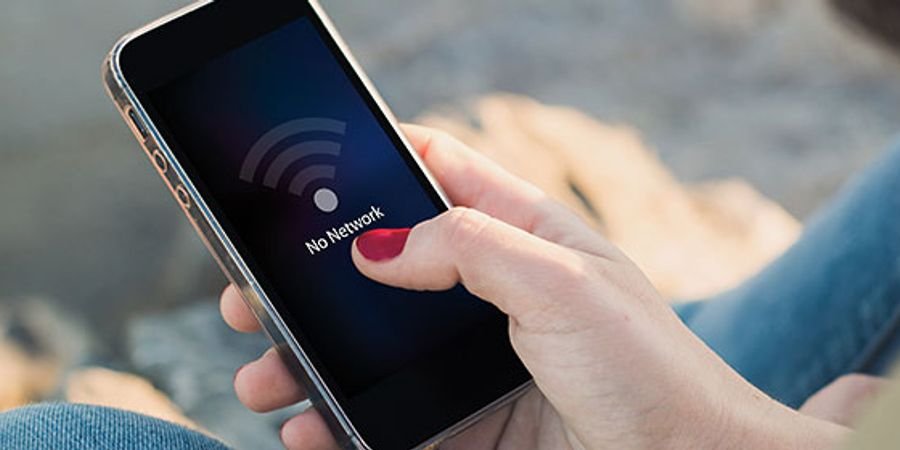
Before you buy a phone from HiTech Land, you need to make sure the frequency will operate in your country. With a Band Class Chart or GSM Band Chart, you can determine if a phone will operate in your country. Alternatively, you can just choose the phone and country on the will my phone work site. If you don’t have an exact model in mind already, we recommend checking the full list of network bands in your country.
What is a frequency band?
A defined operating channel for communication, if your phone does not have the same frequency as your phone company it won’t work. When you purchase a phone locally, it will be compatible with your country, however, when ordering online that is not always the case.
What frequency bands are there?
The basic classification is:
- 2G: 2.75G – GSM
- 3G: WCDMA,
- 3.5G: HSDPA,
- 3.75G: HSUPA (3.75G),
- 4G: including FDD-LTE, TD-LTE,
- 5G: Available in some areas band are an N followed by 1,2 or 3 numbers. (Eg. N5, N42, N234)
Each generation (G) is faster than the previous and the same service can be carried on different bands. So 4G LTE is not enough information to determine if it is compatible, you need the frequency. I.e. 4G LTE 1800Mhz.
What about multiband? Many phones now have a multiband and are built for worldwide use, but there are still some combinations that do not work. Data services can have specific frequencies, so if you don’t check you could end up stuck on 3G when you have a 4G phone.
Fast Method – Frequency Band Charts
If you know the Band Class of the phone you want to buy you can use the charts below to find the band class frequency and determine if the phone will work with your carrier. This is the fastest method and great if you already know the frequency you need for your carrier/country.
3G Frequency Band Class Chart
| 3G (UMTS) | 3G (CDMA) | ||||||
| Band Class | B1 | B2 | B4 | B5 | B8 | BC0 | BC1 |
| Frequency (Mhz) | 2100 | 1900 PCS | 1700/2100 AWS 1 | 850 | 900 GSM | 800 | 1900 PCS |
4G Frequency Band Class Chart
| 4G (LTE) | |||||
| Band Class | B1 | B2 | B3 | B4 | B5 |
| Frequency (Mhz) | 2100 | 1900 PCS | 1800+ | 1700/2100 AWS 1 | 850 |
| Band Class | B7 | B8 | B9 | B12 | B13 |
| Frequency (Mhz) | 2600 | 900 | 1800 | 700 ac | 700 c |
| Band Class | B17 | B18 | B19 | B20 | B21 |
| Frequency (Mhz) | 700 bc | 800 Lower | 800 Upper | 800 DD | 1500 Upper |
| Band Class | B25 | B26 | B28 | B38 | B39 |
| Frequency (Mhz) | 1900+ | 850+ | 700 APT | TD 2600 | TD 1900+ |
| Band Class | B40 | B41 | B66 | B71 | |
| Frequency (Mhz) | TD 2300 | TD 2500 | 1700/2100 | 600 | |
5G Frequency Bands
5G is split into many different bands, as this is an emerging technology, double check your carrier and phone are using the same bands in your area.
| 5G Regular Bands | |||||
| Band Class | n1 | n2 | n3 | n5 | n7 |
| Frequency (MHZ) | 2100 | 1900 | 1800 | 850 | 2600 |
| Band Class | n8 | n12 | n14 | n18 | n20 |
| Frequency (MHZ) | 900 | 700 | 700 | 850 | 800 |
| Band Class | n25 | n28 | n29 | n30 | n34 |
| Frequency (MHZ) | 1900 | 700 | 700 | 2300 | 2100 |
| Band Class | n38 | n39 | n40 | n41 | n48 |
| Frequency (MHZ) | 2600 | 1900 | 2300 | 2500 | 3500 |
| Band Class | n50 | n51 | n65 | n66 | n70 |
| Frequency (MHZ) | 1500 | 1500 | 2100 | 1700 | 2000 |
| Band Class | n71 | n74 | n75 | n76 | n77 |
| Frequency (MHZ) | 600 | 1500 | 1500 | 1500 | 3700 |
| Band Class | n78 | n79 | n80 | n81 | n82 |
| Frequency (MHZ) | 3500 | 4700 | 1800 | 900 | 800 |
| Band Class | n83 | n84 | n86 | n89 | n90 |
| Frequency (MHZ) | 700 | 2100 | 1700 | 850 | 2500 |
| 5G – Super Fast Bands | ||||
| Band Class | n257 | n258 | n260 | n261 |
| Frequency (GHZ) | 28 | 26 | 39 | 28 |
3 Step Method
If you don’t know any details about your carrier or the smartphone bands, here is a 3 step process to finding a compatible smartphone for your region.
Step 1: Find out your countries frequencies/bands.
| Norway | 2G | - | GSM 900/1900 |
| 3G | Mobile Norway | 3G 2100 | |
| Telenor | 3G 2100 | ||
| TeliaSonera (NETCOM) | 3G 2100 | ||
| 4G | TeliaSonera | 4G LTE 800/1800/2600Mhz | |
| Telenor | 4G LTE 800/1800/2600Mhz | ||
| Tele2 | 4G LTE 1800Mhz | ||
| EXAMPLE: The bands available in Norway. | |||
Go to the site below and find your country to get the list of frequencies that are operating in your region. Also, check your specific phone company frequencies as in some areas companies have different bands.
Step 2: Find the frequency of the phone you like
Go to the product page and find the specifications. You are looking for the “Frequency bands”.
Browse Top SmartphonesStep 3: Decide
Compare the phone frequencies to the available frequencies to determine if you can use this phone in your country.
Technical definitions to be aware of
- The letters after a frequency define the band; 800ac and 800bc are not the same.
- + after a frequency is the same as without; 1100+ is the same as 1100.
If you looking for a new phone, discover the latest popular models on our smartphone page.





Leave a Reply
Your email address will not be published. Required fields are marked *